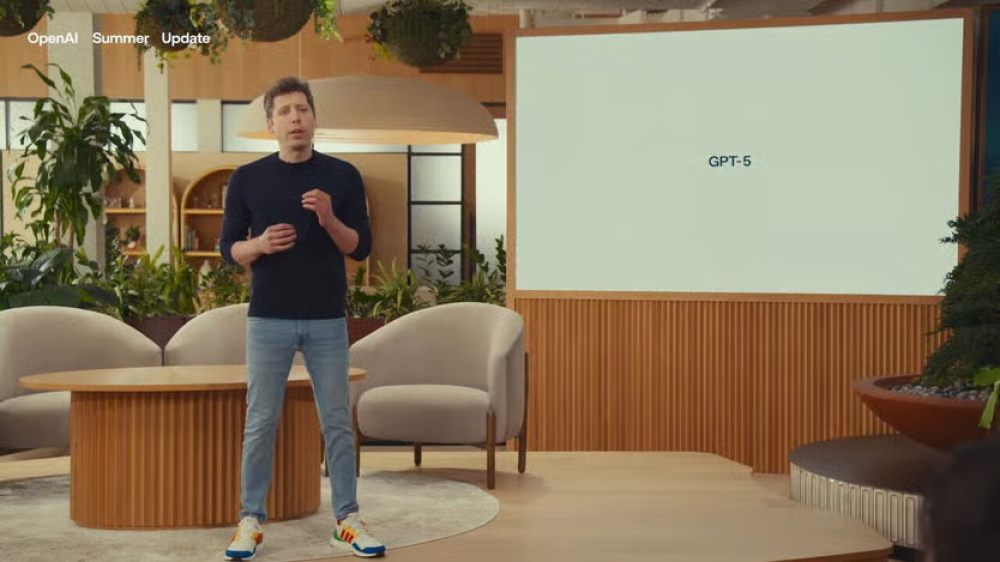
GPT-5 của OpenAI: cải tiến hợp nhất mạnh mẽ nhưng chưa tạo bước nhảy vọt cách mạng
-
Ngày 7/8/2025, Sam Altman giới thiệu GPT-5 trong sự kiện phong cách Apple, hợp nhất tất cả các mô hình trước đây (4o, 4.5, o3-pro) thành một mô hình “thống nhất” tự quyết định cách tiếp cận tốt nhất cho từng câu hỏi.
-
GPT-5 được quảng bá là AI tiêu dùng dễ tiếp cận hơn, đưa người dùng phổ thông tiếp xúc trực tiếp với năng lực AI tiên tiến.
-
OpenAI đang tìm kiếm vòng gọi vốn mới với định giá 500 tỷ USD.
-
GPT-5 đạt hiệu suất tốt nhất thế giới trong nhiều lĩnh vực như kỹ thuật phần mềm và lập luận khoa học, tiệm cận khả năng của chuyên gia con người trên thước đo công việc tri thức kinh tế phức tạp. Tuy nhiên, cải tiến so với GPT-o3 (tháng 4/2025) và GPT-o1 (2024) là không lớn.
-
Theo METR, GPT-5 phù hợp với xu hướng tăng gấp đôi khả năng AI mỗi ~200 ngày. Từ 2019 (GPT-2, 50% chính xác ở tác vụ 2 giây) tới 2025, GPT-5 có thể xử lý tác vụ mất hơn 2 giờ cho con người.
-
Dự báo trong 2 năm tới, AI có thể hoàn thành khối lượng công việc một ngày của nhân viên văn phòng, tiệm cận AGI; vài năm sau đó có thể đạt superintelligence.
-
Một số chuyên gia an toàn, như Gaia Marcus (Ada Lovelace Institute), cảnh báo cần khẩn trương quy định quản lý. Future of Life Institute lo ngại GPT-5 thúc đẩy xu hướng “tự cải thiện đệ quy” có thể dẫn tới rủi ro nghiêm trọng.
-
Tiến bộ liên tục có thể đưa AI đạt năng lực thay đổi thế giới chỉ trong vài năm tới, và GPT-5 không loại bỏ khả năng này.
📌 GPT-5 hợp nhất các mô hình AI trước đây, cải thiện hiệu suất nhưng vẫn theo tiến trình tăng trưởng đều đặn, xử lý tác vụ. GPT-5 phù hợp với xu hướng tăng gấp đôi khả năng AI mỗi ~200 ngày. Trong 2 năm, AI có thể đạt AI tổng quát, vài năm sau đạt siêu trí tuệ. Các chuyên gia cảnh báo nguy cơ và yêu cầu siết chặt quản lý, khi OpenAI tiếp tục tiến nhanh trên con đường AI tiên tiến.
https://www.economist.com/science-and-technology/2025/08/08/openais-latest-step-towards-advanced-artificial-intelligence
OpenAI’s latest step towards advanced artificial intelligence
GPT-5 is an update, not a revolution. But revolution may still be on the way

Thảo luận
Follow Us
Tin phổ biến



